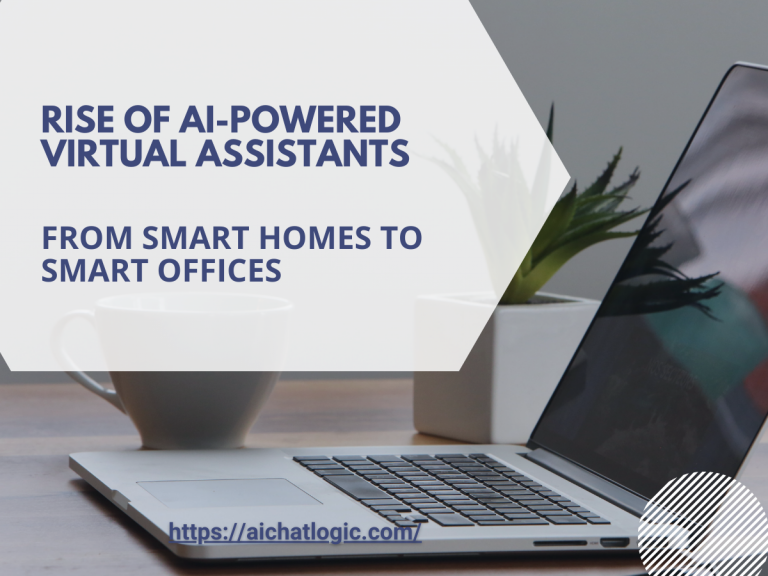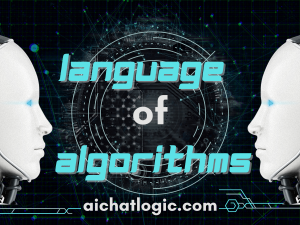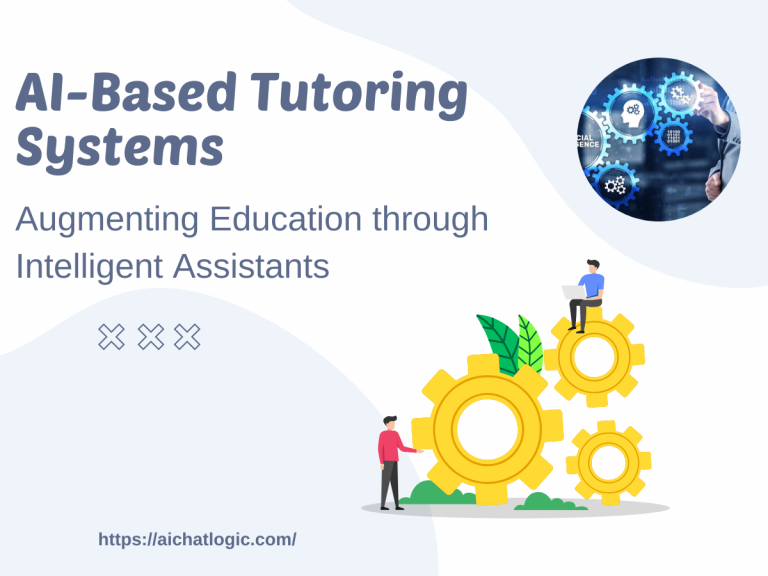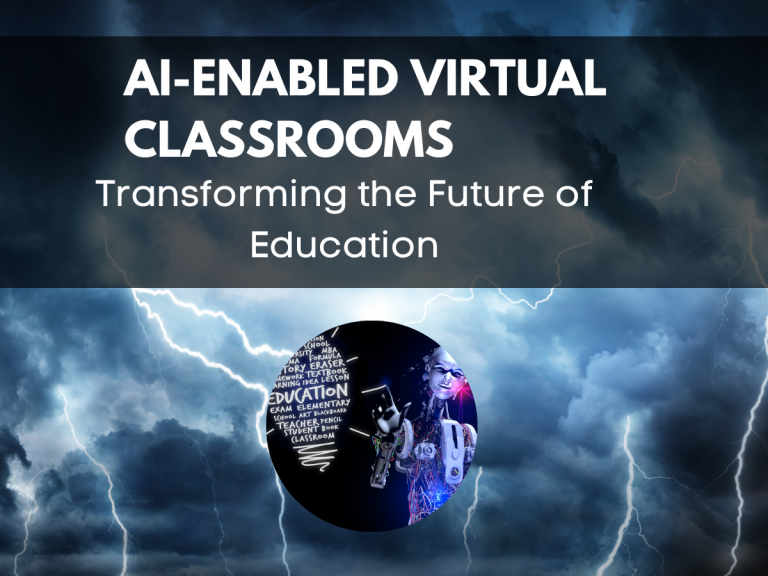The AI era is an extraordinary time in human history, characterized by the rapid progress and integration of artificial intelligence (AI) technologies into various aspects of our daily lives. AI has the potential to revolutionize industries across the board, bringing about improvements in efficiency, elevated customer experiences, and unlocking unprecedented opportunities for innovation.
Introduction
In today’s rapidly evolving digital age, embracing the era of Artificial Intelligence (AI) is no longer a choice but a necessity for businesses seeking to stay competitive. AI has revolutionized various industries, offering unprecedented opportunities for growth and innovation. This article will provide a comprehensive roadmap for businesses to navigate the AI era successfully. We will explore the concept of AI, its impact on businesses, implementation strategies, and its applications in various sectors such as marketing, customer service, operations, healthcare, and education. Additionally, we will delve into ethical considerations surrounding AI and provide guidance on overcoming the fear associated with its adoption. By the end, you will be equipped with the knowledge and tools to embrace the AI era and drive success in your organization.
Understanding the AI Era
2.1 What is Artificial Intelligence?
Artificial Intelligence refers to the development of intelligent machines that can perform tasks that typically require human intelligence. These machines are designed to perceive their environment, reason, learn from past experiences, and make informed decisions. AI encompasses various subfields, including machine learning, natural language processing, computer vision, and robotics.
2.2 The Rise of AI in the Digital Age
The digital age has witnessed an exponential growth in data and computing power, enabling the rapid advancement of AI technologies. Organizations across industries are leveraging AI to gain insights, automate processes, and deliver personalized experiences. AI is transforming the way businesses operate, opening up new possibilities and driving innovation at an unprecedented pace.
The Impact of AI on Businesses
3.1 Transforming Industries
AI is reshaping industries by automating routine tasks, augmenting human capabilities, and enabling breakthrough innovations. It has the potential to revolutionize sectors such as healthcare, finance, retail, manufacturing, and transportation. Organizations embracing AI can gain a competitive edge by streamlining operations, reducing costs, and delivering superior products and services.
3.2 Enhancing Efficiency and Productivity
By automating repetitive tasks, AI frees up valuable time for employees to focus on higher-value activities. Machine learning algorithms can analyze large datasets, identify patterns, and make predictions, enabling businesses to make data-driven decisions quickly. This improves operational efficiency, enhances productivity, and drives growth.
3.3 Personalizing Customer Experiences
AI enables businesses to understand customer preferences and behavior at a granular level, leading to highly personalized experiences. Machine learning algorithms can analyze vast amounts of customer data to identify individual preferences, recommend relevant products or content, and deliver tailored marketing messages. This level of personalization fosters customer loyalty and drives revenue growth.
3.4 Unlocking New Opportunities
AI opens up new avenues for innovation and revenue generation. Businesses can leverage AI technologies to develop new products, optimize supply chain operations, and create disruptive business models. By embracing AI, organizations can explore untapped opportunities and position themselves as industry leaders in the digital age.
Implementing AI in Your Business
4.1 Assessing Your Needs and Goals
Before embarking on an AI journey, it is crucial to assess your organization’s specific needs and goals. Identify the pain points you want to address, the areas where AI can bring the most significant impact, and the desired outcomes you want to achieve. Conducting a thorough analysis will help you align AI initiatives with your overall business strategy.
4.2 Identifying Suitable AI Technologies
Once you have defined your goals, the next step is to identify the most suitable AI technologies for your business. Consider factors such as data availability, infrastructure requirements, and compatibility with existing systems. Machine learning, natural language processing, and computer vision are among the commonly adopted AI technologies, but the choice should align with your specific use cases.
4.3 Overcoming Challenges and Barriers
Implementing AI may pose challenges, including data quality issues, integration complexities, and the need for skilled talent. Address these challenges by ensuring data accuracy and accessibility, investing in robust infrastructure, and providing adequate training and resources to your workforce. Collaboration with AI experts and partners can also help overcome implementation barriers.
AI in Marketing and Sales
5.1 Intelligent Data Analysis
In the digital age, data is a valuable asset for businesses. AI enables advanced data analysis, uncovering hidden patterns and trends that human analysts may miss. By leveraging AI-powered analytics tools, marketers can gain deep insights into customer behavior, preferences, and buying patterns. This enables targeted marketing campaigns, optimized pricing strategies, and improved customer acquisition and retention.
5.2 Predictive Analytics
Predictive analytics leverages AI algorithms to forecast future outcomes based on historical data. In marketing and sales, predictive models can help identify potential customers, predict their likelihood of conversion, and optimize marketing spend. By accurately predicting customer behavior, businesses can tailor their marketing efforts, allocate resources effectively, and maximize ROI.
5.3 Chatbots and Virtual Assistants
Chatbots and virtual assistants powered by AI technologies are transforming customer interactions. These intelligent conversational agents can provide instant responses to customer queries, assist in product recommendations, and even complete transactions. By automating customer support and providing 24/7 availability, businesses can enhance customer satisfaction and reduce operational costs.
5.4 Hyper-Personalization
AI enables hyper-personalization by analyzing vast amounts of customer data and tailoring experiences accordingly. By understanding individual preferences, AI-powered systems can deliver personalized product recommendations, content, and offers. This level of personalization enhances customer engagement, fosters brand loyalty, and drives revenue growth.
AI in Customer Service
6.1 Automated Support Systems
AI-powered chatbots and virtual agents can handle routine customer queries, providing instant responses and resolutions. These automated support systems can significantly reduce customer service costs while ensuring round-the-clock availability. Advanced natural language processing capabilities enable chatbots to understand and respond to customer inquiries effectively.
6.2 Natural Language Processing
Natural Language Processing (NLP) enables machines to understand and interpret human language. AI-powered NLP algorithms can analyze customer queries, extract meaning, and provide relevant responses. This technology enables businesses to deliver personalized and human-like interactions, enhancing the overall customer service experience.
6.3 Intelligent Routing and Escalation
AI can optimize the routing and escalation of customer inquiries to the most suitable agents. By analyzing customer intent and agent skillsets, intelligent systems can ensure that each inquiry is directed to the right person, improving first-call resolution rates and reducing customer wait times. This streamlined process enhances customer satisfaction and boosts operational efficiency.
AI in Operations and Supply Chain
7.1 Demand Forecasting and Inventory Optimization
AI algorithms can analyze historical sales data, market trends, and other variables to forecast demand accurately. This enables businesses to optimize inventory levels, reducing carrying costs while ensuring sufficient stock availability. By aligning supply with demand, organizations can streamline operations, improve customer satisfaction, and minimize stockouts or excess inventory.
7.2 Autonomous Vehicles and Drones
AI-powered autonomous vehicles and drones are revolutionizing transportation and logistics. These technologies enable efficient delivery operations, reduce transportation costs, and improve speed and accuracy. Autonomous vehicles can navigate routes, optimize fuel consumption, and minimize human errors. Drones offer fast and cost-effective last-mile delivery solutions, particularly in remote or hard-to-reach areas.
7.3 Robotics and Automation
Robotic process automation (RPA) and AI-enabled robotics are transforming manufacturing and warehouse operations. Robots can perform repetitive tasks with precision and efficiency, enhancing productivity and reducing errors. Intelligent systems can analyze sensor data, make real-time adjustments, and optimize production processes. The integration of AI and robotics drives operational excellence and accelerates business growth.
AI in Healthcare
8.1 Improved Diagnostics and Treatment
AI technologies are revolutionizing healthcare by improving diagnostics and treatment outcomes. Machine learning algorithms can analyze medical images, patient records, and clinical data, enabling accurate disease detection and personalized treatment plans. AI-powered decision support systems provide healthcare professionals with valuable insights, assisting in diagnosis, treatment selection, and patient monitoring.
8.2 Drug Discovery and Development
AI accelerates the drug discovery and development process, reducing costs and time to market. Machine learning models can analyze vast amounts of biomedical data, predict the effectiveness of potential drug candidates, and identify promising molecular structures. AI also aids in the identification of patient populations for clinical trials, increasing the chances of successful drug development.
8.3 Remote Patient Monitoring
AI-powered remote patient monitoring systems enable healthcare providers to monitor patients’ health conditions outside traditional healthcare settings. Wearable devices and sensors collect real-time patient data, which is analyzed by AI algorithms for early detection of health issues. This technology enhances patient care, reduces hospital readmissions, and improves overall healthcare outcomes.
AI in Education
9.1 Adaptive Learning Systems
AI-powered adaptive learning systems tailor educational content and experiences to individual student needs and learning styles. Machine learning algorithms analyze student performance data to deliver personalized learning paths, adaptive assessments, and targeted interventions. This approach fosters student engagement, improves learning outcomes, and enhances educational equity.
9.2 Intelligent Tutoring
Intelligent tutoring systems leverage AI technologies to provide personalized and interactive learning experiences. These systems can understand students’ knowledge gaps, provide targeted explanations, and offer adaptive feedback. By emulating human tutoring, AI-powered intelligent tutors enhance students’ understanding and retention of complex concepts.
9.3 Personalized Learning Paths
AI enables the creation of personalized learning paths based on individual student capabilities and goals. Machine learning algorithms analyze student data, identify strengths and weaknesses, and recommend suitable learning resources. This personalized approach empowers students to learn at their own pace, fosters intrinsic motivation, and maximizes learning outcomes.
Ethical Considerations of AI
10.1 Privacy and Data Security
The widespread adoption of AI raises concerns about privacy and data security. Organizations must ensure the responsible collection, storage, and usage of data. Implement robust security measures, comply with data protection regulations, and prioritize transparency in data handling to build trust with customers and stakeholders.
10.2 Bias and Fairness
AI systems can inadvertently perpetuate biases present in the training data, leading to unfair outcomes and discrimination. It is crucial to address bias and ensure fairness in AI algorithms and decision-making processes. Regular audits, diverse training data, and continuous monitoring are necessary to mitigate bias and promote equitable AI solutions.
10.3 Transparency and Accountability
AI algorithms can be complex and opaque, making it challenging to understand their decision-making processes. Organizations should strive for transparency and accountability by ensuring clear explanations of AI-driven decisions, providing accessible documentation, and establishing mechanisms for auditing and addressing potential issues. This fosters trust and ensures responsible AI deployment.
Overcoming the Fear of AI
11.1 Education and Awareness
Education and awareness are essential in overcoming the fear and skepticism surrounding AI. Promote knowledge sharing and training programs to help individuals understand the capabilities and limitations of AI. By providing accurate information and addressing misconceptions, organizations can build confidence and encourage the acceptance of AI technologies.
11.2 Collaboration and Partnerships
Collaboration and partnerships between AI experts, businesses, policymakers, and society at large are crucial in driving responsible AI adoption. Encourage open dialogue, knowledge exchange, and interdisciplinary collaboration to foster trust and ensure ethical practices. By working together, stakeholders can collectively address challenges and maximize the benefits of AI.
11.3 Human-AI Coexistence
The future lies in human-AI collaboration and coexistence. Emphasize the complementary nature of AI technologies and human capabilities. AI should be seen as a tool to augment human potential rather than a replacement. By embracing a human-centric approach and designing AI systems with human values in mind, we can create a future where humans and AI thrive together.
Embracing the AI Era: A Roadmap to Success
12.1 Start with a Clear Vision and Strategy
To embrace the AI era successfully, start by defining a clear vision and strategy for AI adoption in your organization. Align AI initiatives with your business goals and identify specific use cases that can drive the most significant impact. Develop a roadmap outlining the necessary steps, milestones, and resources required to achieve your AI objectives.
12.2 Invest in Talent and Skills
AI implementation requires skilled professionals with expertise in AI technologies, data analysis, and domain knowledge. Invest in talent acquisition, training, and upskilling programs to build a competent AI team. Foster a culture of continuous learning and innovation to keep up with evolving AI trends and ensure the successful implementation of AI projects.
12.3 Build a Data-Driven Culture
Data is the fuel that powers AI. Establish a data-driven culture within your organization by prioritizing data collection, quality, and accessibility. Implement robust data governance practices, ensure data privacy and security, and leverage advanced analytics tools to derive actionable insights. By harnessing the power of data, you can make informed decisions and drive AI-driven transformations.
12.4 Foster Collaboration and Experimentation
AI implementation requires collaboration across teams and departments. Encourage cross-functional collaboration, break down silos, and promote knowledge sharing. Create an environment that encourages experimentation and risk-taking, allowing for the exploration of new AI technologies and approaches. By fostering a culture of collaboration and experimentation, you can accelerate AI adoption and drive innovation.
12.5 Continuously Monitor and Evaluate
The AI landscape is ever-evolving. Continuously monitor the performance of your AI systems, gather feedback from users, and evaluate the impact of AI on your business objectives. Implement mechanisms for continuous improvement, refine AI models based on real-world feedback, and adapt your AI strategy as needed. This iterative approach ensures that AI remains aligned with your organization’s goals and delivers sustainable value.
Conclusion
The AI era presents immense opportunities for businesses across industries. Embracing AI can lead to enhanced operational efficiency, improved customer experiences, and new avenues for innovation. However, successful AI implementation requires careful planning, a focus on ethical considerations, and a commitment to ongoing learning and improvement. By following a roadmap that encompasses strategy, talent, data, collaboration, and continuous evaluation, organizations can navigate the AI era and position themselves for success in the digital age.
FAQs
FAQ 1: What is AI?
AI, or Artificial Intelligence, refers to the development of computer systems that can perform tasks that would typically require human intelligence. These tasks include understanding natural language, recognizing patterns, making decisions, and learning from experience. AI technologies, such as machine learning and natural language processing, enable machines to process and analyze vast amounts of data, leading to insights and intelligent actions.
FAQ 2: How is AI transforming industries?
AI is transforming industries by automating tasks, enhancing efficiency, and enabling breakthrough innovations. Healthcare, AI improves diagnostics and treatment outcomes. In marketing and sales, AI enables personalized customer experiences and targeted marketing campaigns. In operations and supply chain, AI optimizes inventory management and enables autonomous vehicles. The potential applications of AI are vast and span across various sectors.
FAQ 3: Is AI replacing humans?
No, AI is not meant to replace humans but to augment human capabilities. While AI can automate routine tasks and provide intelligent insights, human creativity, critical thinking, and empathy remain essential. AI is most effective when it collaborates with humans, enabling them to make better decisions, enhance productivity, and focus on high-value activities.
FAQ 4: What are the ethical considerations of AI?
Ethical considerations in AI include privacy and data security, fairness and bias, transparency and accountability, and the impact on society. It is crucial to handle data responsibly, ensure fairness in AI algorithms, provide transparency in decision-making processes, and address potential societal impacts. By prioritizing ethics, organizations can build trust, minimize risks, and promote responsible AI adoption.
FAQ 5: How can organizations prepare for the AI era?
Organizations can prepare for the AI era by starting with a clear vision and strategy, investing in talent and skills, building a data-driven culture, fostering collaboration and experimentation, and continuously monitoring and evaluating AI initiatives. By following a roadmap that encompasses these elements, organizations can successfully embrace the AI era and harness its transformative potential.












+ There are no comments
Add yours